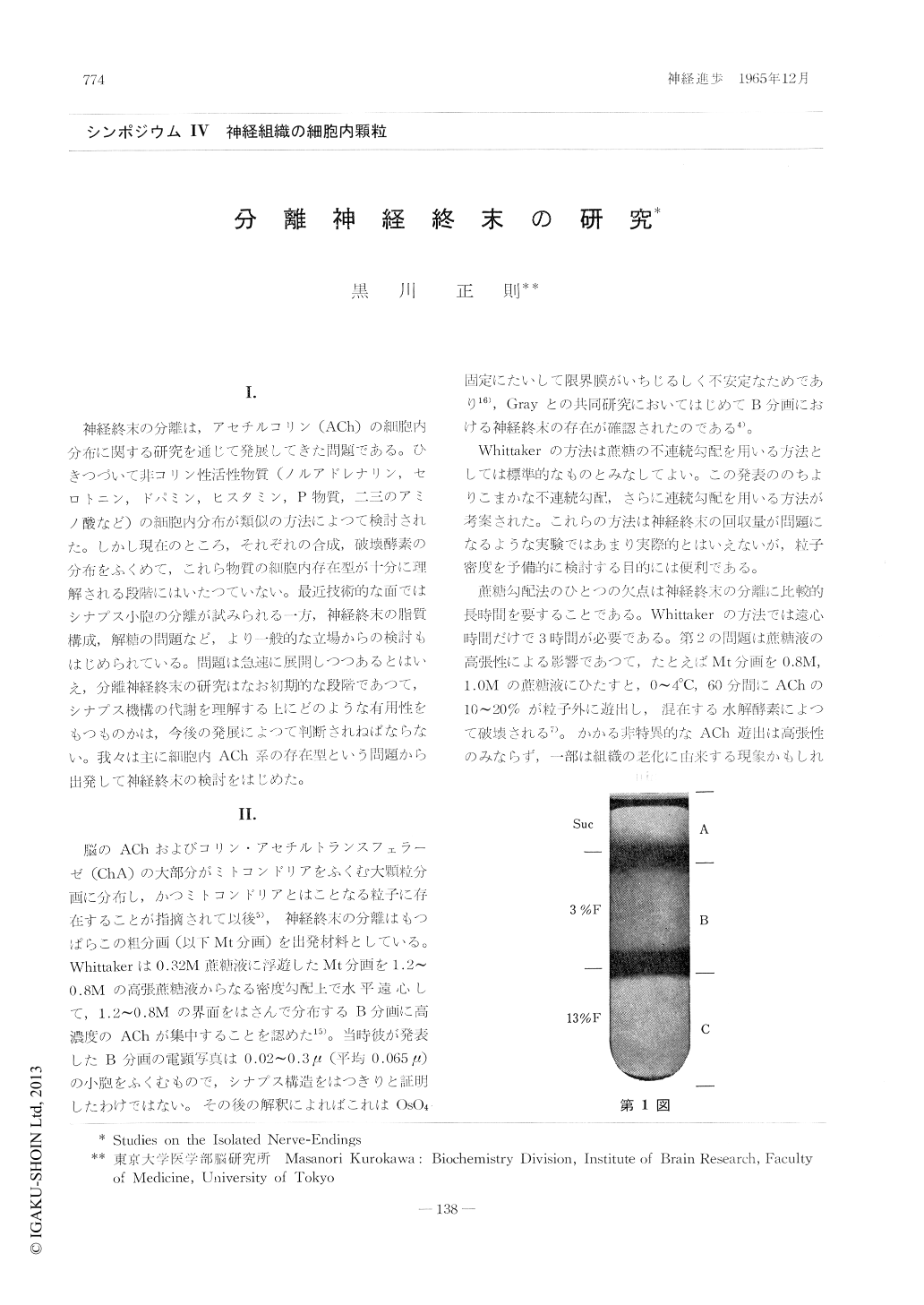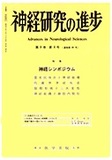Japanese
English
- 有料閲覧
- Abstract 文献概要
- 1ページ目 Look Inside
I.
神経終末の分離は,アセチルコリン(ACh)の細胞内分布に関する研究を通じて発展してきた問題である。ひきつづいて非コリン性活性物質(ノルアドレナリン,セロトニン,ドパミン,ヒスタミン,P物質,二三のアミノ酸など)の細胞内分布が類似の方法によつて検討された。しかし現在のところ,それぞれの合成,破壊酵素の分布をふくめて,これら物質の細胞内存在型が十分に理解される段階にはいたつていない。最近技術的な面ではシナプス小胞の分離が試みられる一方,神経終末の脂質構成,解糖の問題など,より一般的な立場からの検討もはじめられている。問題は急速に展開しつつあるとはいえ,分離神経終末の研究はなお初期的な段階であつて,シナプス機構の代謝を理解する上にどのような有用性をもつものかは,今後の発展によつて判断されねばならない。我々は主に細胞内ACh系の存在型いう問題から出発して神経終末の検討をはじめた。
Isolation of nerve-ending particles from the crude mitochondrial fraction of brain has been achieved using discontinuous density gradients of sucrose (Whittaker, 1959; Gray and Whittaker, 1962). The procedure has an established value, but because of a rather long time being required for operation, a possibility has been realized that aging factors may impede biochemical characterization of the endings, particularly when the labile substance such as acetylcholine is concerned (Kurokawa et al., 1964). In an attempt to isolate nerve-ending particles in shorter time and under apparently milder conditions, it was found that discontinuous density gradients of Ficoll effected a satisfactory separation of the endings (Fig. 1; Table 1; Kuro-kawa, Sakamoto and Kato, 1964, 1965). Electron-microscopic observations showed that the black-body formation observed among nerve-endings isolated in hypertonic sucrose (Gray and Whit-taker, 1962), was much less frequent in case of the Ficoll procedure (Figs. 3-6). Also the mor-phological appearance of mitochondrion appeared to be better preserved in the Ficoll than in the sucrose procedure (Figs. 7 and 8). The Na+ and K+ stimulated adenosinetriphosphatase activity (Skou, 1957) in the crude mitochondrial fraction was found mainly located in the nerve-ending fraction (Table 2), and this was practically attribu-table to the presence of the activity in the limiting membranes of nerve-ending particles. Attempts to isolate synaptic vesicles (de Robertis et al., 1963; Whittaker et al., 1964; Maynert et al., 1964) were referred to, and a possible significance of osmotically-labile and stable portion of particle-bound acetylcholine in understanding the compart-mentation of the acetylcholine system in vivo was briefly discussed (cf. Kurokawa et al., 1963).

Copyright © 1965, Igaku-Shoin Ltd. All rights reserved.


